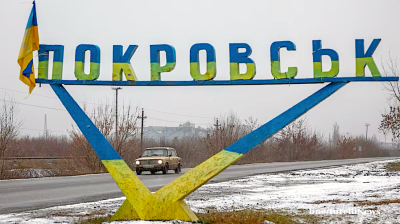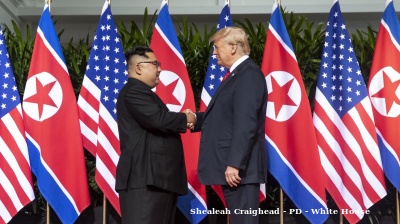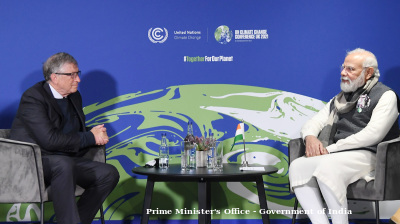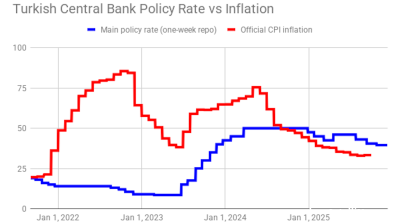Turkey’s official consumer price index (CPI) inflation in May amounted to 73.50% y/y, following on from the 69.97% announced for April, the Turkish Statistical Institute (TUIK, or TurkStat) said on June 3.
Notably, TUIK has stopped separately providing average prices recorded for each item in its consumer inflation basket.
Impertinent jokes such as “The cheapest cars on sale are available in the TUIK shop window” will stop. This problem is permanently solved.
May’s CPI figure is the highest headline inflation figure recorded by Turkey since the 76.6% posted in October 1998.
At 73.5%, Turkey stays in sixth place in the global inflation league. Turkey’s rival Zimbabwe has pulled into the distance by releasing 132% for May.

Istanbul’s ENAG inflation research group calculated that Turkey’s CPI inflation in May was 161% y/y, following on from the 157% it assessed for April.

Alarm devices tied to products in supermarkets, baby food locked in glass cabinets, enchained cooking oil cans, queues in front of subsidised bread stalls and people collecting food from waste containers have become commonplace in Turkey. Alarm devices on bottles of milk are a new development.
TUIK, meanwhile, gave an official figure of 132% y/y for producer price index (PPI) inflation in May, up from 122% in April.
The May figure was the highest posted since the 144.3% y/y reported for March 1995.
On April 28, the central bank said in its latest inflation report that official inflation would peak at below the 75%-level in May and fall across the remainder of the year (thanks to the base effect).
The guidance was based on the assumption that the Turkish lira (TRY) would not experience another crash. On June 3, the USD/TRY pair was up 12% to 16.53 compared to the 14.79 registered on April 28.
The stress in commodities (such as wheat, sunflower oil , natural gas and oil) continues.
The FAO food price index declined for the second consecutive month from 158.5 in April to 157.4 points in May, up 23% y/y (record high: 159.7 in March). The cereal price index was up 2% m/m and 56% y/y in May.
As of June 2, Brent was up 65% y/y to $118 while Dutch TTF Natural Gas Futures were higher by 233% y/y.
The Bloomberg Commodity Index (BCOM) was higher by 42% y/y at 134. Year on year, the USD/TRY was up 92%.
On June 23, Turkey’s monetary policy committee (MPC) is expected to hold its policy rate constant again at 14% at its next rate-setting meeting.
On July 4, TUIK will release the official inflation data for June.
Since May 24, the Erdogan regime has been defending the 16.50-level on the USD/TRY chart. The undesirable but still controlled devaluation continues. All eyes are on where the exchange rate might stabilise.
Unknown is how much is flowing into the central bank’s account from the lira deposit protection scheme and exporters/tourism companies, while the reserves continue to decline.

The Turkish central bank’s net FX position stood at minus $61bn as of June 1 (Chart by @e507).
The Erdogan regime could enjoy a less troubled two-month economic period amid summer liquidity dryness. But the lira appears headed in one direction only.
Some relaxation is already observable in the yield on 10-year US Treasury papers and in the USD index (DXY). However, the current situation is a long way from normality. Don’t dispense with the idea that a colossal meltdown could be ahead.
An uninterrupted decline in the USD/TRY would also be no surprise under the current global and domestic dynamics.
Turkey reported a record trade deficit of $11bn for May. For April, a $6bn trade deficit was recorded.

The summer decline in gas imports is not producing the expected recovery in the trade balance. The central bankers should now work harder to write bigger tourism revenues for a recovery in the current account deficit.

There is no foreign interest in Turkish papers. Debt-rollovers continue undeterred, but with no fresh inflow. Eurobond auctions stopped in March. Net FDI remains around zero. Nothing much comes via unidentified channels.
Turkey’s 5-year credit default swaps (CDS), meanwhile, hit 738 on May 26 (This is not a record. See chart below by @e507) while the yield on the Turkish government’s 10-year eurobonds remained in the 9%s.

In May, net lira creation via loans broke a fresh record, with TRY 217bn ($13bn).

As of end-May, net lira creation via loans also extended its record on annual basis to TRY802bn.

Despite the ultra-loose monetary policy, Turkey's economic activity has not responded positively. At the same time, Turkey's big export market, namely Europe, has endured its own slowdown since the beginning of 2022.

The Fed’s balance sheet declined to $8.92 trillion as of end-May. A record $8.97 trillion was registered as of April 12.
As of June 1, the Fed officially began reducing its balance sheet, with a monthly cap of $47.5bn by September pencilled in.
On June 15, the Fed’s open market committee is expected to deliver another 50bp rate hike following its next meeting. Updated projections from the governors will also be released.
As of June 3, the average gasoline price in the US was up 57% y/y to a fresh record high of $4.76 per gallon.
On June 9, the European Central Bank (ECB) is expected to end its bond-buying programme at its rate-setting meeting.
The EUR/USD remains above the 1.07-level.
Inflation in the Euro Area extended its record-breaking series to a seventh consecutive month with 8.1% y/y in May. Producer price inflation reached 37.2% y/y in April.
In Turkey, political assassinations, terror attacks, some other bloody occurrences (as seen in the June-November 2015 period), the closure of the pro-Kurdish Democratic Peoples’ Party (HDP) (the HDP has reserve parties, this move would not make sense), the seizure of the Istanbul Municipality and the jailing/banning from politics of Istanbul mayor Ekrem Imamoglu are among expectations for the period ahead.
In foreign policy, Erdogan, always wanting to plump up his status, is currently angling for a photoshoot with Joe Biden at the next Nato summit, to be held in Madrid on June 30.
Erdogan cannot attack Kurds he has in his sights in Syria without US permission. The trick here is that there are two small enclaves, namely Tal Rifaat and Menbij, on the western side of the Euphrates river (See the map here).
The Western media and governments would make a lot of noise about any attack but it would mean no cost for the Erdogan regime. Still, it all depends on Russia’s permission.
The Greece issue, meanwhile, really makes no sense.
News

Russia claims to surround Pokrovsk
Russia’s chief of the general staff Valery Gerasimov triumphantly reported to Putin that 31 Ukrainian battalions have been encircled in Pokrovsk and 18 battalions in Kupyansk, the hottest spot in the war.
.jpg)
Brazil and US to start urgent tariff negotiations after Trump-Lula meeting
Brazilian President Luiz Inácio Lula da Silva and US President Donald Trump have agreed to start immediate negotiations on tariffs and sanctions imposed by Washington, following a meeting in Malaysia that sought to ease trade tensions.

Cambodia and Thailand agree peace deal
Thailand and Cambodia have agreed a peace deal to mark the end of a conflict earlier in the year as Cambodian Prime Minister Hun Manet and Thai Prime Minister Anutin Charnvirakul attended a signing ceremony overseen by US President Donald Trump.

Trump would like to meet North Korea’s Kim Jong Un during Asia trip
The prospect of renewed diplomacy between Washington and Pyongyang has lingered since Kim’s remarks last month suggesting a willingness to speak to the outside world.




